Daily Archives for January 17, 2019
How Australian wildlife spread and suppress Ross River virus
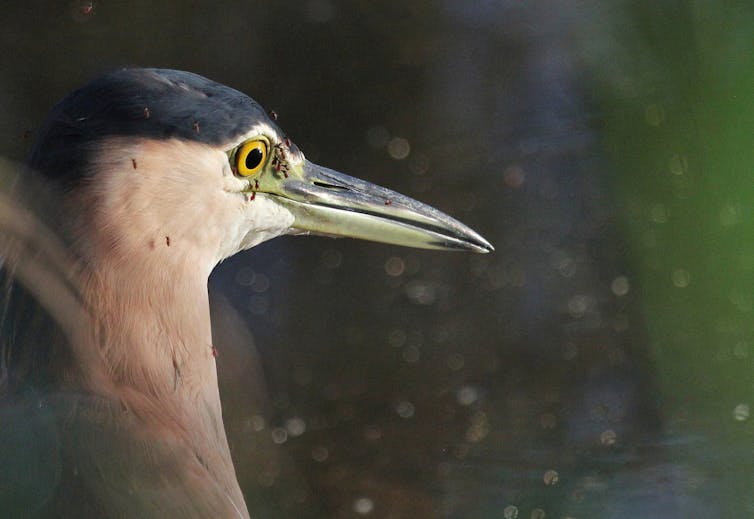
Janis Otto/flikr
Eloise Stephenson, Griffith University; Cameron Webb, University of Sydney, and Emily Johnston Flies, University of Tasmania
Ross River virus is Australia’s most common mosquito-borne disease. It infects around 4,000 people a year and, despite being named after a river in North Queensland, is found in all states and territories, including Tasmania.
While the disease isn’t fatal, it can cause debilitating joint pain, swelling and fatigue lasting weeks or even months. It can leave sufferers unable to work or look after children, and is estimated to cost the economy A$2.7 to A$5.6 million each year.
There is no treatment or vaccine for Ross River virus; the only way to prevent is to avoid mosquito bites.
Read more:
Explainer: what is Ross River virus?
Mosquitoes pick up the disease-causing pathogen by feeding on an infected animal. The typical transmission cycle involves mosquitoes moving the virus between native animals but occasionally, an infected mosquito will bite a person. If this occurs, the mosquito can spread Ross River virus to the person.
Animal hosts
Ross River virus has been found in a range of animals, including rats, dogs, horses, possums, flying foxes, bats and birds. But marsupials – kangaroos and wallabies in particular – are generally better than other animals at amplifying the virus under experimental infection and are therefore thought to be “reservoir hosts”.
The virus circulates in the blood of kangaroos and wallabies for longer than other animals, and at higher concentrations. It’s then much more likely to be picked up by a blood-feeding mosquito.
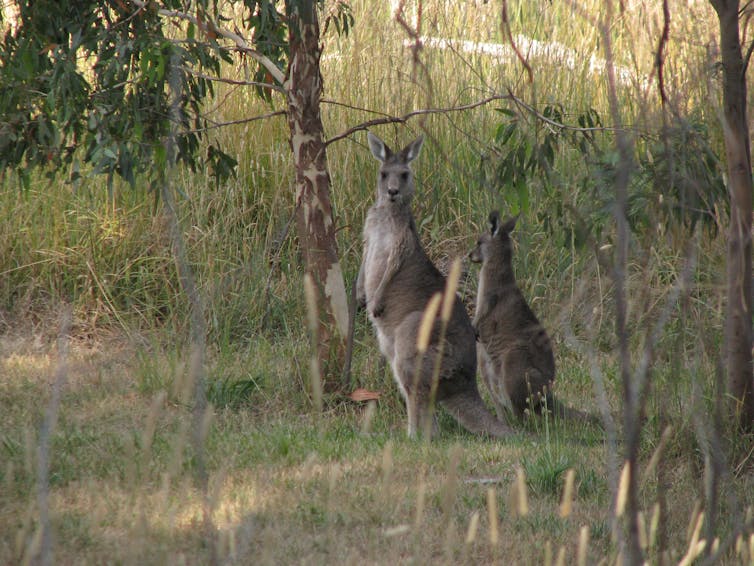
Dr Cameron Webb (NSW Health Pathology), Author provided
Dead-end hosts
When we think of animals and disease we often try to identify which species are good at transmitting the virus to mosquitoes (the reservoir hosts). But more recently, researchers have started to focus on species that get bitten by mosquitoes but don’t transmit the virus.
These species, known as dead-end hosts, may be important for reducing transmission of the virus.
With Ross River virus, research suggests birds that get Ross River virus from a mosquito cannot transmit the virus to another mosquito. If this is true, having an abundance of birds in and around our urban environments may reduce the transmission of Ross River virus to animals, mosquitoes and humans in cities.
Other reservoir hosts?
Even in areas with a high rates of Ross River virus in humans, we don’t always find an abundance of kangaroos and wallabies. So there must be other factors – or animals yet to be identified as reservoirs or dead-end hosts – playing an important role in transmission.
Ross River virus is prevalent in the Pacific Islands, for instance, where there aren’t any kangaroos and wallabies. One study of blood donors in French Polynesia found that 42.4% of people tested had previously been exposed to the virus. The rates are even higher in American Samoa, where 63% of people had been exposed.
Read more:
The worst year for mosquitoes ever? Here’s how we find out
It’s unclear if the virus has recently started circulating in these islands, or if it’s been circulating there longer, and what animals have been acting as hosts.
What about people?
Mosquitoes can transmit some viruses, such as dengue and Zika between people quite easily.
But the chances of a mosquito picking up Ross River virus when biting an infected human is low, though not impossible. The virus circulates in our blood at lower concentrations and for shorter periods of time compared with marsupials.
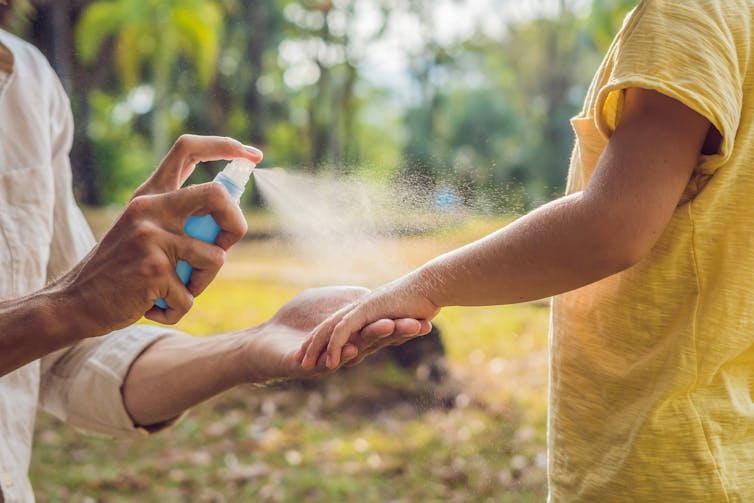
Elizaveta Galitckaia/Shutterstock
If humans are infected with Ross River virus, around 30% will develop symptoms of joint pain and fatigue (and sometimes a rash) three to 11 days after exposure, while some may not experience any symptoms until three weeks after exposure.
To reduce your risk of contracting Ross River virus, take care to cover up when you’re outdoors at sunset and wear repellent when you’re in outdoor environments where mosquitoes and wildlife may be frequently mixing.
Read more:
Mozzie repellent clothing might stop some bites but you’ll still need a cream or spray
![]()
Eloise Stephenson, PhD Candidate, Griffith University; Cameron Webb, Clinical Lecturer and Principal Hospital Scientist, University of Sydney, and Emily Johnston Flies, Postdoctoral Research Fellow (U.Tasmania), University of Tasmania
This article is republished from The Conversation under a Creative Commons license. Read the original article.
What happens after you take injured wildlife to the vet?
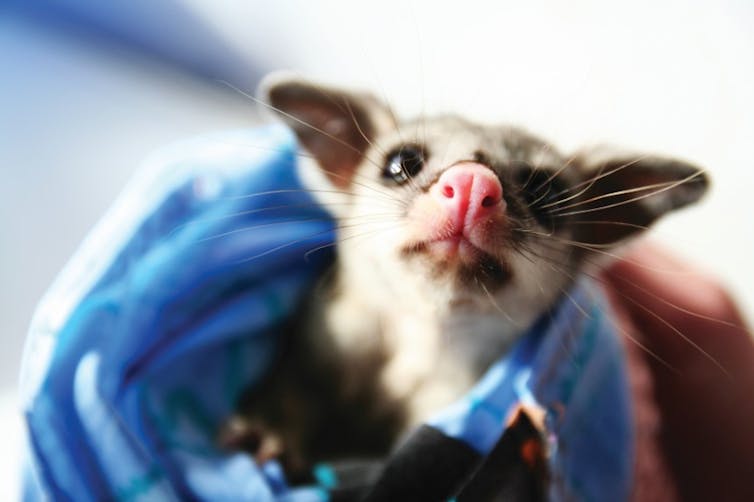
RSPCA ACT
Bronwyn Orr, University of Sydney
Australia’s wildlife is unique and endearing, with many species found nowhere else in the world. Unfortunately, it isn’t rare to encounter sick or injured wildlife around your home or by the side of the road. My research, recently published in the Australian Veterinary Journal, estimates between 177,580 and 355,160 injured wild animals are brought into NSW veterinary clinics alone every year.
But until now, very little was known about what happens to wildlife after they’re brought to a vet. My colleagues and I surveyed 132 veterinary clinics around Australia, examining the demands and expectations of treating wildlife. We also looked for risks to animal welfare as a result of these findings.
Most clinics only saw a handful of wildlife patients every week, with birds and marsupials such as possums the most common. Sadly, the majority (82%) of wildlife arrived in veterinary care due to trauma of some kind. The most common cause was animals being hit by cars, followed by undefined trauma and predation by another animal.
Read more:
Want to help animals? Don’t forget the chickens
Most clinics examined and treated wildlife for free, with less than 10% receiving some kind of payment. These were usually made by wildlife rehabilitation groups or members of the public.
Due to the painful and serious nature of trauma, around a third of clinics reported euthanasia was the most common outcome for wildlife at their clinic. More positively, more than half indicated that wildlife were usually passed onto wildlife rehabilitators, suggesting this is the most common outcome.

Author Provided
Almost three quarters of veterinary clinics said they only saw wildlife when they had spare time. This is concerning, as delays to treatment raises serious animal welfare concerns.
Additionally, many veterinary clinics indicated they felt a lack of time, knowledge and skills interfered with their ability to treat wildlife.
As veterinary clinics are small businesses, wildlife present a conundrum. They are not owned (although technically they are owned by the Crown), expect treatment with no payment and don’t look like the usual pets seen by most vets. With clinics full of paying clients expecting prompt treatment, it can be hard to prioritise wildlife.
So what is the solution?
Ideally, either the state or federal government would take financial responsibility for wildlife. The federal government does pay for some wildlife treatment at private veterinary clinics, but this is part of a biosecurity monitoring scheme and isn’t open to most clinics.
Read more:
How dogs and cats can get their day in court
Donations from the public to treat wildlife would also likely be welcomed. However, help can come in other ways. One large clinic in Sydney is trialling an in-house wildlife carer, who would triage wildlife and take responsibility for ensuring wildlife are prioritised. Appointing a “wildlife champion” in a clinic is another option, where an interested vet or nurse is designated the “go to” person for wildlife cases.

From Shutterstock
What should you do if you find injured wildlife?
1. Call your local wildlife care group for advice
Some animals aren’t actually injured, such as fledgling birds which are learning to fly, and others (such as goannas) can be dangerous, so be sure to seek advice before approaching wildlife. If you don’t know who your local wildlife care group is, type into a search engine “wildlife carer” to locate one near you.
2. Keep yourself safe
Armed with advice from a wildlife carer, ensure you don’t put yourself in a risky situation to rescue wildlife. Take care around busy roads, use a barrier between yourself and the injured animal (such as a towel or welding gloves) and avoid the bitey end! Wildlife are inherently fearful of people, which means they might attack if scared.
Read more:
Put out water for the wildlife in your garden on hot days
3. Secure the injured animal before transport
You don’t want an injured animal to escape in your car on the way to the vet. If the injured animal is a bird, small reptile or baby marsupial, a cardboard box with air holes and lined with a towel makes a good transport container. Don’t offer wildlife food, as they have very special diets and digestive systems.
4. Give as much information as possible
When you get to the vet, ensure you provide detailed information on where you found the animal. If the animal is healthy enough to enter wildlife rehabilitation, the wildlife carers will need to release the animal as close as possible to the location where it was found. This is because many animals, such as possums, are fiercely territorial and often die if relocated outside their territory.
Ultimately, many injured wild animals cannot be saved and will be euthanased after being dropped off at a veterinary clinic. This is not a bad outcome. Wildlife aren’t pets – they need to be fit to survive if they are ever going to have a chance in the wild. Injuries such as a badly broken wing or losing an eye would condemn wildlife upon release to starvation or predation.
It is much kinder to humanely euthanase injured wildlife which have no chance of survival rather than let them suffer a prolonged death in the wild. Even if the animal you drop off at the vet is ultimately euthansed, you have still saved it from prolonged suffering.![]()
Bronwyn Orr, Veterinarian and PhD candidate, University of Sydney
This article is republished from The Conversation under a Creative Commons license. Read the original article.
The economics of ‘cash for cane toads’ – a textbook example of perverse incentives
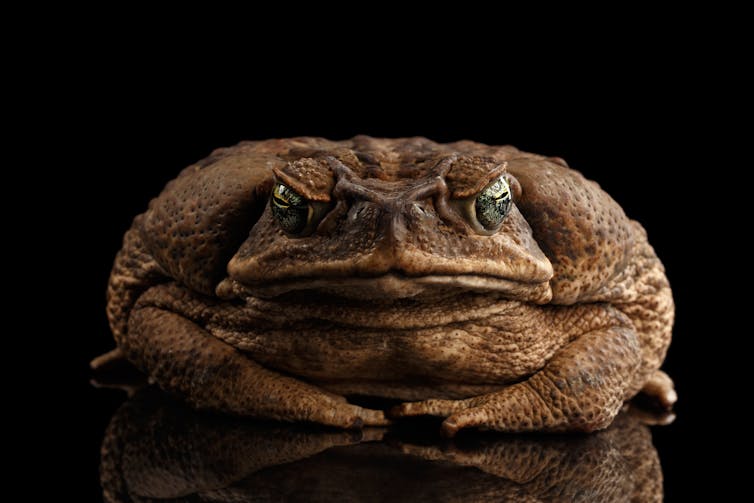
Shutterstock
David Smerdon, The University of Queensland
Economics teachers can all thank Pauline Hanson for providing an excellent example to add to their classes.
Indeed, it’s rare that Economics 101 lessons are as readily on display as in the Queensland senator’s “cash for cane toads” proposal.
Both textbook wisdom and historical failures tell us the plan won’t work.
Hanson’s proposal involves paying welfare recipients 10 cents for each toad they collect (alive) and hand over to their local council. The council would then kill the toads humanely in large freezers.
The senator is right to be concerned about the cane toad problem. Introduced in the 1930s as a biological fix to control native beetles eating sugar cane crops, the animals have prospered with devastating impact on native flora and fauna. It’s estimated there are now more than 200 million across Queensland and northern New South Wales.
Read more:
We’ve cracked the cane toad genome, and that could help put the brakes on its invasion
They carry toxins at all stages of their life cycle, including as eggs. Ingesting the toxin is fatal to many Australian species. Their voracious appetites both deplete insect populations such as honey bees and threaten the food sources of other native animals.
The reason Hanson’s idea is fundamentally flawed, both in theory and in practice, has to do with incentives.
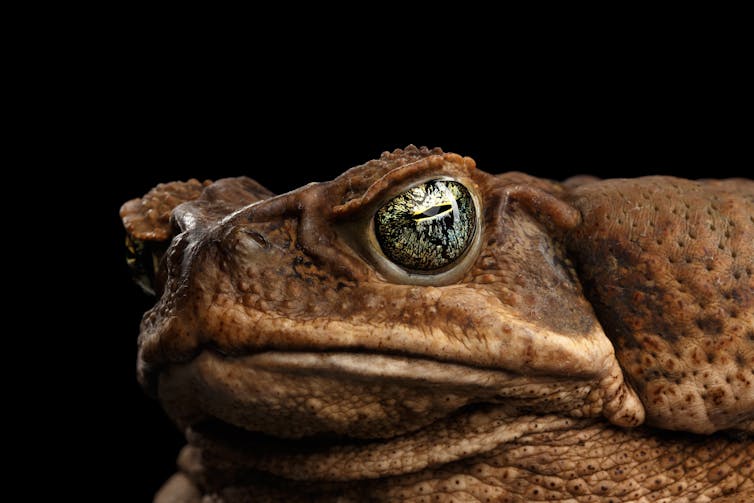
http://www.shutterstock.com
History repeating
Incentives are central to economics. They are ingrained in the laws of demand and supply, and the setting of interest rates and taxes.
Humans react to incentives. The key is setting them just right by accounting for all of the costs involved.
This is the most obvious and least interesting problem with the scheme. In NSW and Queensland, you can earn 10 cents by returning an empty drink container to your local supermarket. That’s a task exponentially easier than catching a cane toad and delivering it alive to your local council chambers.
If it were just a case of the incentives being too low, the solution would be simple: raise the price.
However, this would run into a surprising phenomenon called the Cobra effect. Also known as “perverse incentives”, it describes a situation in which a seemingly well-intentioned proposal actually makes things much worse.
The Cobra effect is named after a curious incident from British Colonial India. Faced with a cobra outbreak, the local government of Delhi enacted a cash-for-cobras scheme, with initial success. But as cobras became harder to find, the locals responded to the incentives in a completely logical way: they started breeding the snakes to claim their bounties. When the scheme was scrapped, breeders released their now-worthless snakes, resulting in the city having more cobras than before the scheme.
A similar case comes from French-run Vietnam.
When the colonial government built a sewerage system under Hanoi early in the 20th century, it inadvertently helped create a rat plague. Its solution was a cash-for-rats scheme – though to save the government having to dispose of hundreds of thousands of rat carcasses, it only required collectors turning in a rat’s tail to claim their bounty.
Crowd displeasers
The consequences this time were not only the creation of pop-up rat-breeding farms, but also hordes of tail-less rats roaming the city streets.
Of course, at its current pittance of 10 cents a toad, Hanson’s proposal is unlikely to lead to lucrative cane-toad farming.
It’s a reasonable claim that the incentives would simply be too low to be effective, leading to no change in the status quo (besides large freezers sitting empty at local council buildings).
Yet even as a toothless policy, a cash-for-cane-toads scheme could produce other unintended consequences.
When people already do something out of their own goodness, like volunteering, putting a price on the activity by offering chump change can actually put them off. Behavioural economists call this “crowding out of intrinsic motivation”. It explains why blood donation rates are no different between countries that pay donors (such as the United States) and those that rely on volunteers (such as Australia).
Read more:
For love, not money: kidney exchange encourages social contract
One of the best-known examples in economics involved a day-care in Israel that introduced small fines for parents who were late picking up their children. The result was a doubling of lateness. Before the fine, parents would try to come on time because it was the right thing to do. After the fine, however, that moral value had a price: about three dollars.
Notably, parents continued to come late after the fines were removed. Parents who pay pocket money for chores need only imagine how their own kids would respond if they moved to a “volunteer system”.
Thus economics gives us a third reason to doubt Senator Hanson’s proposal will work: the risk that altruistic citizens who have culled cane toads for free will be discouraged by a price being put on the activity.
Instead of considering the “priceless” value of native ecosystems when spotting an offending creature, people may start weighing up their efforts against 10 cents. This cost-benefit thinking could continue even after the compensation scheme ends.
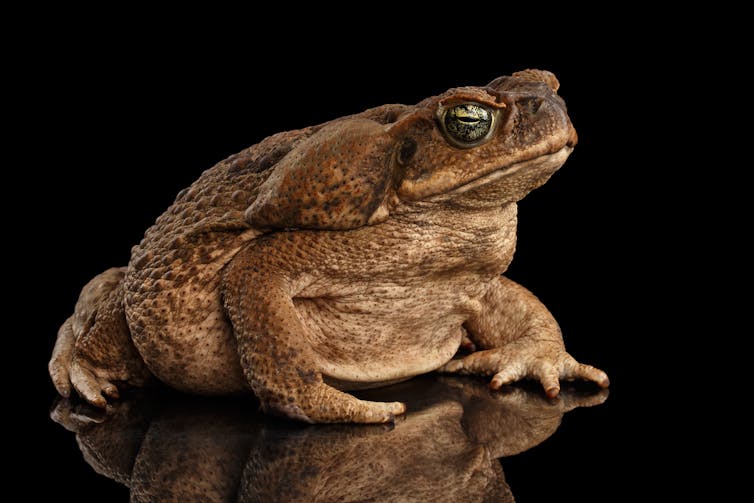
http://www.shutterstock.com
That’s the crux of why this payment scheme wouldn’t work. Setting a high price perverts the incentives, while setting a low price crowds out intrinsic motivations. In either case, taxpayer money is wasted and the toad problem is potentially made worse.
The best approach is to leave prices out of it and trust our experts, who are continuing to come up with remarkably innovative ideas to solve the cane toad problem.
Senator Hanson’s proposal was no doubt made with the best of intentions. Unfortunately, in reality the only real beneficiaries would be economics teachers.![]()
David Smerdon, Assistant Professor, School of Economics, The University of Queensland
This article is republished from The Conversation under a Creative Commons license. Read the original article.
